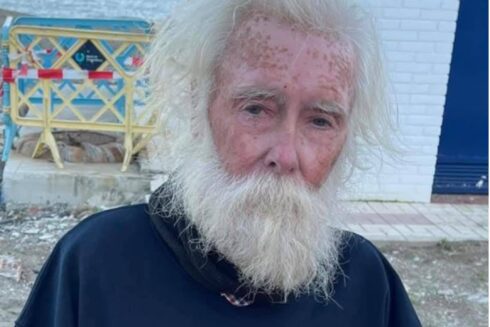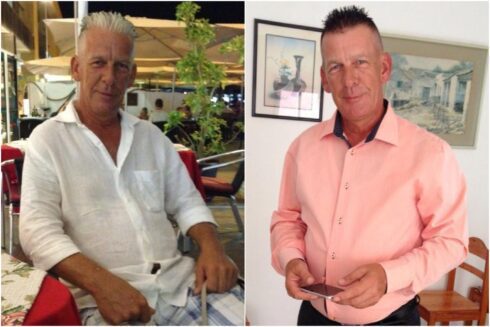A WHIRLWIND tour of Manilva will take you far and wide in just a few square kilometres.
You might start by gazing out at luscious yachts bobbing by the glitzy port, or the glistening sea along a peaceful beach trail.
And then minutes later you could find yourself among rolling green hills populated by luxury villas, or burgeoning vineyards around a whitewashed village.
And on your journey you will meet a kaleidoscope of people from all walks of life, each with a story to tell.
Manilva officially has the highest percentage of Brits on the padron in Spain, with a third of the 12,000-strong municipality hailing from Blighty.
But it’s not just Brits – foreign, settled residents, many from northern European countries, make up 42% of Manilva’s population.
In spite of these high numbers, Manilva is not simply an expat colony – not at all.
The district has a strong and thriving Spanish culture and community that lives extremely harmoniously and very cordially with their foreign guests.
The locals and the foreigners mix and mingle in the same bars and restaurants and the pitter patter of conversation dances between English and Spanish – and very often halting Spanglish.

“We come here for the sangria,” Londoner Richie tells the Olive Press in the shade of a Spanish bar near El Castillo, a tiny fishing village buzzing with Spaniards and foreigners.
“We go around to all the towns along the Costa del Sol,” his friend Siobhan adds. “We even go as far as Algeciras. I give the sangrias in each place a score out of ten.”
And how much did she give the sangria in El Castillo? “Oh, this is a nine,” she declares – nowhere gets a ten. “I think it’s the cinnamon. They get it just right.”
El Castillo gets its name from the castle that guards its sea walls. Built in 1767 by engineer Miguel del Castillo and builder Jose Vargas, it was financed by Sevilla businessman Francisco Paulino.
The fortification was planned with war against the English in mind, with Gibraltar having fallen to the newly-formed United Kingdom just half a century before.
In its more modern incarnation, as recently as the 1970s the monument was a residence divided into 16 homes for families housing 70 people.
Today it is a tourist attraction in an ideal location, but beware – it doesn’t open on weekends!

Bow to the Duke
Just a short stroll along the beachfront from El Castillo, you will find a port unlike any other port on the Costa del Sol.
Puerto de la Duquesa is the only one to face out to sea. From each of the three edges you can gaze out into the Mediterranean.
Duquesa is, without a doubt, the thriving coastal jewel in the Manilva crown, benefiting from tourism and buzzing with life.
For most of its history Manilva has been dependent on fishing and agriculture, especially its vineyards and celebrated sweet wines.
But over the last couple of decades, as this little township has welcomed an influx of tourists and development, it has still maintained a peaceful air.
Most residents in these parts inhabit either the coral-white marina of ‘La Duquesa’, which sits on the mile-long beachfront of San Luis de Sabinillas or up on the hilltop lookout of Manilva itself.
Though the Brits and the 180-odd other nationalities come from all walks of life and occupations (some have even set up a newspaper here) they all have something in common.

Like Manilva’s first health tourist, Julius Caesar, who visited the nearby Roman baths around 60BC, it seems that people come here for a temperate life beneath the jaw-dropping mountains, fed by the fruits of the sea.
Bob and Jen from Essex told the Olive Press over Belgian fries that they manage to come to Manilva once a month for as long as ten days a pop.
But they are content with splitting their time in this way, and are not tempted to fully retire to the sun just yet.
Bob, who works in the solar energy business, still has a few more panels to lay in this booming industry before he’s ready to hang up his work belt.
But it is partly due to content second-home expats such as Bob and Jen that the unpretentious Duquesa has undergone such a growth spurt in the last decade – and the expansion doesn’t look like slowing down anytime soon.
New cafes, bars and restaurants with cuisine from all over the world are springing up as a result of its growing tourism.
Aside from the fantastic prices of homes in the area, the environment is distinctly low rise, largely green and everything is close to the sea.
But when you do venture inland, you will head into wine-making territory.

Wine-Making Territory
Manilva town, a sleepy, glittering village nestled on a hilltop, is famous for its sweet wine.
It, and the process of making it, is something indelibly imprinted on the locals.
Even our taxi driver proselytised over the wonders of this wine – although he did advise us not to get through more than one bottle at a time.
When you arrive in the village, you will see that the central Plaza de la Vendimia (Wine harvest square) is adorned with a spectacular mural depicting workers in vineyards.
And in the nearby interpretation Centre, opened in 2010, you can do vocational courses in wine-making, aimed at inspiring the younger generations and training future professionals.
The locals like to boast that the moscatel de Alejandria is the best table grape in the whole of Spain and that it is specific to Manilva, whose slopes have been continuously planted with vineyards since 1501.
The wine made from this grape – the Manilva wine – is known as ‘vino mosto’, and in the olden days, almost the entire town earned a living from it.

The trucks would come from as far as Bilbao to take the grapes and whatever was left would be turned into wine.
Almost all of the locals that the Olive Press spoke to could remember back to those days.
Most of them had been living in Manilva village all their lives, they all knew each other, and they had done so since childhood.
“This place is one big family,” lifelong resident Eligio told us.
Eligio, who’s sun-beaten blue eyes twinkled as he regaled us with tales of Manilva over two cañitas that he generously bought for us, said he spent most of his free time in the village church.
Nearby, a sign displayed the village motto: Very noble, very loyal.
Then another man who had been listening in walked over to our table, put his hands on Eligio’s shoulders, and told us with all sincerity that our new friend embodied this motto.
It turned out that they had known each other since they were knee-high, and Eligio had even worked for the man’s father.
Further along, and buried in Manilva’s historical heart a short walk from the centre, is St Anne’s church and adjoining cemetery, where Eligio liked to spend his time.
Who he was remembering he did not tell us.
Turn a corner and there the 250-year-old church is; striking yet simplistic, bold yet unassuming.
Sauntering through the maze of white houses with their terracotta roofs, every ‘Hola’ from passers-by strengthens the feeling that Manilva is very much Spanish still.
Up on the mountain it is removed from the wave of tourism lapping at the coast.
And then there are the postcard views from every direction, white houses spill down into vast vineyards with mountains out behind and the Costa del Sol to the front.
The Pedreta viewpoint delivers a view stretching from the white cluster that is the mountain-clinging Casares village to the coastal hubs of Estepona and Marbella below. A rich network of tracks is visible in between, inviting you out to hike, cycle or horse-ride.
Another short walk and a hop and you are down in San Luis de Sabinillas, or just ‘Sabby’ as it is affectionately known to the expats.
Like everywhere else on the coast, it too has flourished under tourism in the last decade.
But there remains a tangible working atmosphere (it still has a small fishing fleet) and this is still a town where Spanish people enjoy their Spanish lives.
A coastal stroll from Puerto Duquesa, Sabinillas has also become a popular destination for expats.

It is certainly a distinct community with a healthy mix of Spanish, expat English, German, as well as Moroccans and South Americans.
It is also a veritable hive of commerce. While it wins no beauty awards, there is a great range of supermarkets and shops in Sabinillas.
Wall Street is where traditionally all the banks and insurance companies centred and down on the beach there is a great range of bars and restaurants which stretch into the distance on either side.
Back on the blue flag beach, that stretches all the way from Rio Manilva to Puerto Duquesa, fishermen still launch their boats and are often met by waiting restaurateurs upon their return, eagerly awaiting the days catch.
Sabinillas effectively bridges the gap between the multi-cultural, tourism-driven hub of Puerto Duquesa and the withdrawn, tranquil, traditional village of Manilva.
With the right blend of coastal expansion and Spanish tradition, it is easy to see why Manilva is making a name for more than just its wine.








